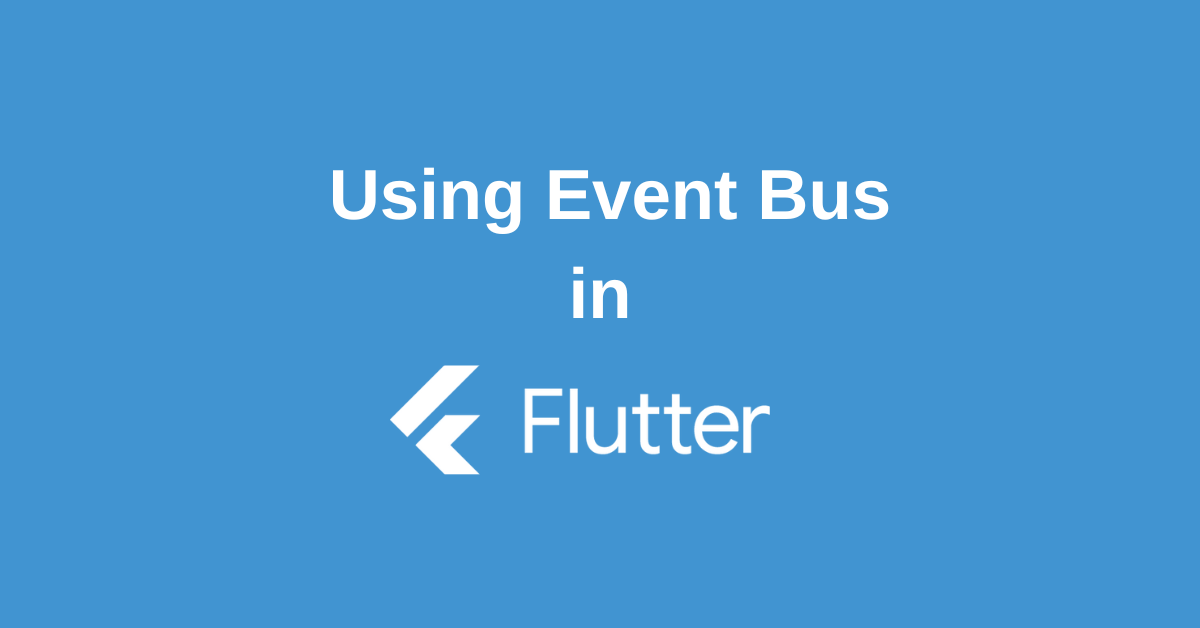In the fast-paced world of mobile app development, real-time interactions are no longer just a feature—they are an expectation. Whether it’s messaging apps, live updates, or collaborative tools, users demand smooth, instantaneous feedback. Flutter, a popular framework for cross-platform app development, offers a robust solution to handling real-time communication efficiently: the Flutter Event Bus. This lightweight yet powerful tool simplifies asynchronous communication across your app, making it easier to manage events and keep your app responsive.
What is Flutter Event Bus?
Flutter Event Bus implements the publish-subscribe pattern, which is a messaging system where components (publishers) send events to a centralized bus and other components (subscribers) listen for and react to these events. This pattern provides a clean and decoupled way for different parts of your Flutter app to communicate without direct dependencies, improving maintainability and scalability.
Unlike typical state management tools that focus solely on managing the state of the app, the event bus shines in managing cross-component communication in real-time scenarios. Its simplicity allows developers to focus on the flow of events rather than tightly coupling components, which can lead to complex, error-prone code.
Why Use Flutter Event Bus?
- Decoupled Communication: Components stay loosely coupled, preventing tight dependencies that complicate code refactoring.
- Real-Time Updates: Instantly notify subscribers when an event occurs, critical for features like typing indicators or message delivery confirmations.
- Centralized Messaging Hub: All events pass through a single Event Bus instance, which maintains order and consistency.
- Asynchronous Event Handling: Events are processed asynchronously, keeping the app smooth and responsive.
Setting Up Flutter Event Bus
Integrating Flutter Event Bus is quick and straightforward:
- Add the Event Bus package to your
pubspec.yaml:
dependencies:
flutter:
sdk: flutter
event_bus: ^2.0.0 2. Run flutter pub get to install the package.
3. Import and initialize the Event Bus in your project:
import 'package:event_bus/event_bus.dart';
EventBus eventBus = EventBus();
4. Define your custom event classes to encapsulate data passed around your app:
class NewMessageEvent {
final String sender;
final String content;
NewMessageEvent(this.sender, this.content);
}
class TypingIndicatorEvent {
final String user;
TypingIndicatorEvent(this.user);
}How to Use Flutter Event Bus
Publishing Events
Whenever an action happens (e.g., a user sends a message), publish an event like this:
eventBus.fire(NewMessageEvent('Alice', 'Hello!'));This dispatches the event, signaling all listeners that a new message event occurred, enabling real-time UI updates.
Subscribing to Events
Components interested in updates listen for specific events:
eventBus.on<NewMessageEvent>().listen((event) {
// Update the chat UI with event.sender and event.content
});Subscribers react to events asynchronously, ensuring the UI is rebuilt smoothly without blocking the main thread.
Best Practices for Using Flutter Event Bus
- Keep Events Simple: Pass only necessary data in event objects to avoid overhead and complexity.
- Use a Single Global Event Bus: Maintain a single instance of the event bus throughout your app to ensure consistency.
- Unsubscribe Listeners: Properly cancel subscriptions when widgets dispose to prevent memory leaks.
- Avoid Overuse: Use Event Bus only for decoupled communication; direct method calls suit tightly coupled components better.
- Encapsulate Events Clearly: Define separate event classes for distinct events like new messages, typing status, or read receipts for clarity and maintainability.
- Test Real-Time Features: Implement unit and integration tests to verify event dispatching and handling, ensuring robustness.
- Debug with Logging: Use logging inside listeners for tracing event flow and troubleshooting issues.
Scaling with Flutter Event Bus
As your app grows, managing communication among numerous components becomes more challenging. Flutter Event Bus simplifies scaling by allowing multiple listeners for different event types without performance degradation. For example, in a messaging app, you might listen to NewMessageEvent, TypingIndicatorEvent, and ReadReceiptEvent simultaneously, each updating specific parts of the UI.
This scalable approach keeps your app modular and easier to maintain, even as new real-time features and users are added.
Testing and Debugging Real-Time Features
Testing asynchronous events is crucial. Flutter Event Bus supports:
- Unit Testing: Verify events are fired and received correctly.
- Integration Testing: Ensure that different parts of your app correctly respond to events.
- Mocking: Use mock event buses to isolate components during testing.
- Logging and Debugging: Monitor event emission and handling during development to spot and fix issues early.
Conclusion
Flutter Event Bus emerges as an elegant, lightweight solution for managing real-time communications in Flutter apps. Its ability to decouple components, facilitate asynchronous event handling, and scale efficiently makes it an essential tool for developers building responsive, real-time user experiences. By following best practices such as keeping events simple, using a single global instance, and thorough testing, developers can build stable and maintainable real-time applications with confidence.
Integrate Flutter Event Bus in your projects today and unlock seamless, real-time communication that keeps users engaged and your app running smoothly. Happy coding!
Wanna Level up Your Flutter game? Then check out our ebook The Complete Guide to Flutter Developement where we teach you how to build production grade cross platform apps from scratch.Do check it out to completely Master Flutter framework from basic to advanced level.

